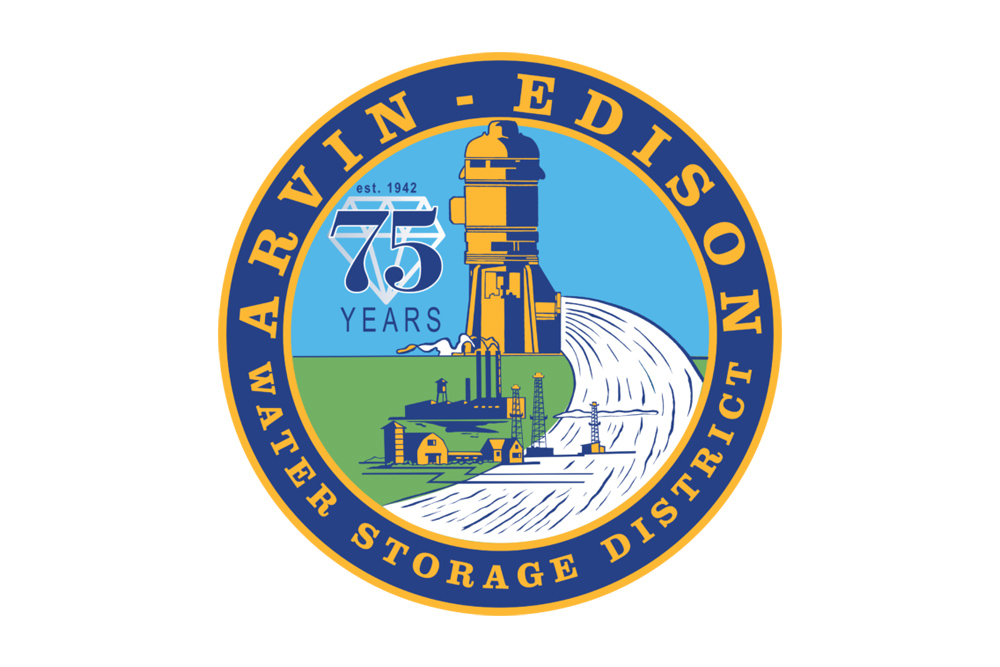The Tulare Irrigation District held its board of directors meeting on Tuesday, August 14, 2018 at its headquarters west of Tulare. Chairman David Bixler called the meeting to order at 9:00 am. General Manager Aaron Fukuda introduced TID’s newest engineer Bill Sario and engineering intern Jeremy Barroll. The board welcomed them and Fukuda said they’ve hit the ground running and solving problems. Under public comment Director Mike Thomas said Congressman Devin Nunes’ democrat opponent Andy Janz was filming a television commercial on a TID canal bank without permission. As it turns out Janz was also trespassing on the adjoining property of a grower named Nunes. A cousin named Carl I believe but  don’t quote me. Any way the Tulare County Sheriffs helped restore order and escorted the film crew and presumably candidate off the property. Maybe Janz should solicit campaign advice from Nancy Pelosi or Alexandria Ocasio-Cortez.
don’t quote me. Any way the Tulare County Sheriffs helped restore order and escorted the film crew and presumably candidate off the property. Maybe Janz should solicit campaign advice from Nancy Pelosi or Alexandria Ocasio-Cortez.
Watermaster Marco Crenshaw gave his report saying total storage behind Terminus Dam is about 19,000 a/f and TID isn’t taking deliveries. Fukuda told the board there is so much solar in the day time the Terminus Powerplant at the dam is going to loose $600,000 per year. There was a financial analysis and if the plant runs at night it could do better – prices ranges from $28/MWh to $74/MWh.
Superintendent Wayne Fox reported TID is now running a full crew for almost two weeks. Staff is staying busy spraying for weeds and fabricating a custom spray truck with a 300-gallon tank. The current truck has a 60-gallon tank. As I recall TID’s O&M staff has done some very innovative and celebrated spray rigs; so has Fresno ID if I remember correctly. Sounds like there’s room in the market for an inventor.
Controller Kathi Artis said water sales were good this year, almost $3 million in irrigation. Things are tracking on budget and the board approved the reports and paid its bills. There are times when a board goes through the bills with a fine-tooth comb. Today was such a day. It was noticed there was a spike in booth copier and toilet paper after recently having the septic tank pumped. Artis also updated the board on the audit. She said the auditors have finished their field work.
 Fukuda gave the Mid Kaweah GSA report. He said there has been almost nothing happening at the Kaweah Sub Basin level. Meetings are falling by the wayside with cancellations. The MKGSA is however, getting things done. MKGSA GM Paul Hendrix is ready to present a cooperation statement designed to move things along in the sub basin. The statement states the GSA will strive to avoid ag land retirement, help the cities satisfy water demands and define projects and management actions in the GSP. Fukuda said establishing the water budget apportionment for the GSP. Every GSA is lobbying for the biggest water budget it can get and that is the place where problems can and do arise. At least one of the places. Director Dave Martin said the conversion of ag land to urban has accelerated since the drought. And the density is growing. He asked the developer how the greater density can be justified in terms of water used and was told, “No problem we’re putting in a tank.” As unaware an answer as one could come up with. It appears urban development is racing to avoid GSP limits. Oh my. Fukuda said GEI is requesting more data from MKGSA. All data concerning TID will be held confidentially in a secure location. It will be reviewed by TID before any releases.
Fukuda gave the Mid Kaweah GSA report. He said there has been almost nothing happening at the Kaweah Sub Basin level. Meetings are falling by the wayside with cancellations. The MKGSA is however, getting things done. MKGSA GM Paul Hendrix is ready to present a cooperation statement designed to move things along in the sub basin. The statement states the GSA will strive to avoid ag land retirement, help the cities satisfy water demands and define projects and management actions in the GSP. Fukuda said establishing the water budget apportionment for the GSP. Every GSA is lobbying for the biggest water budget it can get and that is the place where problems can and do arise. At least one of the places. Director Dave Martin said the conversion of ag land to urban has accelerated since the drought. And the density is growing. He asked the developer how the greater density can be justified in terms of water used and was told, “No problem we’re putting in a tank.” As unaware an answer as one could come up with. It appears urban development is racing to avoid GSP limits. Oh my. Fukuda said GEI is requesting more data from MKGSA. All data concerning TID will be held confidentially in a secure location. It will be reviewed by TID before any releases.
Moving on to Friant matters it was all Temperance Flat for Fukuda. The California Water Commission aced out Temp Flat for early pre-construction funding. Temp received nothing. Political? Without a doubt. The San Joaquin Valley Water Infrastructure Authority JPA is ready to transition to the Investors MOA. The MOA will become the new JPA promoting Temp Flat. The Friant Water Authority will be at the helm of this new JPA. There is also an existing MOU group but let’s not get bogged down here with that ties in. Fukuda expects everything will be finalized by the end of the year. Bixler suggested TID survey its constituents on this matter. Director Rick Borges said it needs to be explained the expense is for purchasing storage space in a new reservoir. The water cost is whatever the US Bureau of Reclamation charges. The cost for storage space will most likely be distributed by the acre in assessments. Fukuda said during 2017 there was at least as much water sent out to sea as could have left Temp Flat* completely full. There is modeling for Temp Flat that will be ready next month.
The other big deal at FWA  is the subsidence of the Friant Kern Canal. Fukuda said it’s moving fast. Stantec Engineering is going to have some options ready by October. There will be a workshop on Tuesday, August 21st 10-2 somewhere. We’ll have to check with Friant where and if it’s open to the public. Also, the current San Joaquin River salmon agreement left the upper SJR out of the loop for addition through Delta flows. News to me: The Bureau has threatened to sue the State Board if it doesn’t back down. There will be a large rally in Sacramento on August 20th. The other Friant item is the possible $750 million Prop Three money (if it passes) needs an advisory committee. So the TID board members are able to throw their hats in this ring. Friant is also scheduling its board retreat in conjunction with the November ACWA meeting in San Diego. The retreat will be at the Hard Rock Café.
is the subsidence of the Friant Kern Canal. Fukuda said it’s moving fast. Stantec Engineering is going to have some options ready by October. There will be a workshop on Tuesday, August 21st 10-2 somewhere. We’ll have to check with Friant where and if it’s open to the public. Also, the current San Joaquin River salmon agreement left the upper SJR out of the loop for addition through Delta flows. News to me: The Bureau has threatened to sue the State Board if it doesn’t back down. There will be a large rally in Sacramento on August 20th. The other Friant item is the possible $750 million Prop Three money (if it passes) needs an advisory committee. So the TID board members are able to throw their hats in this ring. Friant is also scheduling its board retreat in conjunction with the November ACWA meeting in San Diego. The retreat will be at the Hard Rock Café.
Under legislation the water tax is back. Fukuda said ACWA contacted TID saying there is going to be an opt out box, at least proposed. Studies show better than 60 percent of the public ignores this type of option. TID originally stood with ACWA in opposition to the tax. Director Martin said ACWA hasn’t done a good job of supporting ag. He cited how the cities in the Delta are dumping effluent into the rivers and that is harming ag. It encourages the State Board to send more water through the Delta to counter the impacts. The only winner in this is the state gets more money from the tax payer to waste. Borges said it is a Catch-22. Right now the state is trying to force ag to pay for water supplies to disadvantaged communities. Would this new tax force the cities to help pay for this? Is the CWC awards of Prop One money a good example of spending by the State of California’s government? The board will reconsider this later.
The meeting then went into closed session for three items, the trifecta of the Brown Act: real estate, litigation and personnel matters.
DISCLAIMER OF RESPONSIBILITY; Waterwrights strives to provide his clients with the most complete, up-to-date, and accurate information available. Nevertheless, Waterwgtrrights does not serve as a guarantor of the accuracy or completeness of the information provided, and specifically disclaims any and all responsibility for information that is not accurate, up-to-date, or complete. Waterwrights’ clients therefore rely on the accuracy, completeness and timeliness of information from Waterwrights entirely at their own risk. The opinions expressed in this report are those of the author and do not represent any advertisers or third parties.
ALL RIGHTS RESERVED. Copyright 2018 by Don A. Wright No part of this publication may be reproduced, stored in a retrieval system, or transmitted in any form or by any means, electronic, mechanical, photocopying, recording, or otherwise, without the prior written permission of DAW. *I wonder what would happen if folks started calling this project Trump Flat instead of Temp Flat.
TULARE IRRIGATION DISTRICT
6826 Ave 240, Tulare, CA 93274 Office: 559/686-3425
Board: David G. Bixler- President, Richard S. Borges, Jr.-Vice President, Scott Rogers, Dave Martin & Michael Thomas
Staff: Aaron Fukuda-General Manager, Bill Sario-Engineer, Kathi Artis–District Controller, Wayne Fox–Superintendent, Marco Crenshaw–District Watermaster & Alex Peltzer-Attorney.
About: The Tulare Irrigation District was organized September 21, 1889. The original proposal for the formation of an irrigation district covering 219,000 acres, extending from the Sierra Nevada foothills to Tulare Lake, was eventually reduced to 32,500 acres. The District continued in this status until January of 1948 when the so-called Kaweah Lands” (approximately 11,000 acres) were annexed. In October of 1948, approximately 31,000 acres, compromising the area served by the Packwood Canal Company were annexed to the District. A U.S. Bureau of Reclamation contract was signed in 1950 providing an annual supply of 30,000 acre-feet of Class 1 water, and up to 141,000 acre-feet of Class 2 water from the Friant-Kern Canal. The District and the Kaweah Delta Water Conservation District have coordinated efforts to enhance the recharge of groundwater within the Kaweah Basin. During high flow times KDWCD may use the recharge basins with the District for recharge purposes. Further, KDWCD has historically provided for a financial incentive program through which the District sustains the level of groundwater recharge from supply sources into the District. This historical program was recently reinstated by both districts in lieu of the District’s plans to concrete-line this canal to conserve the surface water. TID is a member of the Mid Kaweah GSA.


































